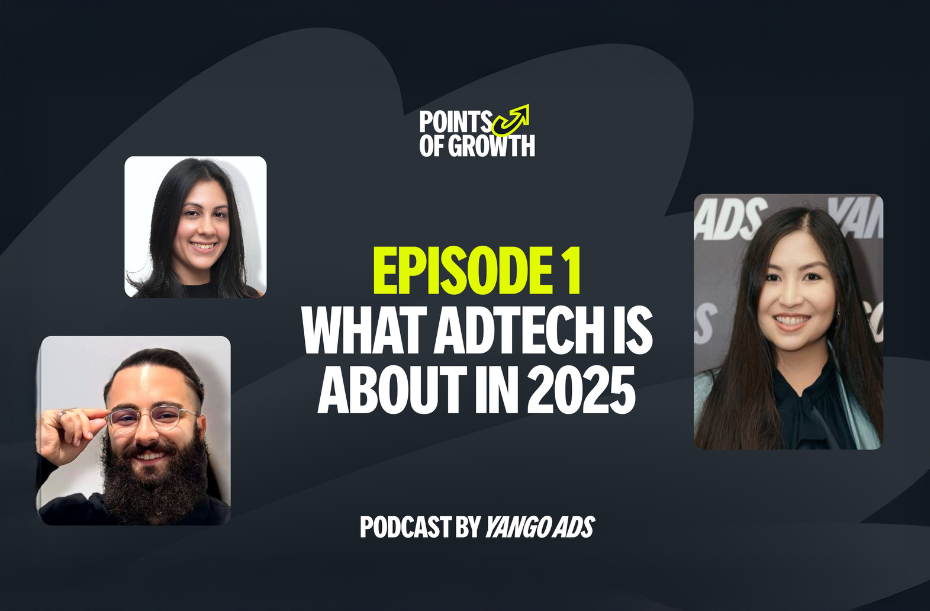
Image: Supplied
As part of the Points of Growth series, the Yango Ads podcast that explores the tools, trends, and real shifts shaping the AdTech landscape, Malika Kennedy, chief business development officer MEA, unpacks the state of AdTech in 2025 and what this means for brands navigating the tension between traditional and digital media.
How do you define the role of ad tech in today’s marketing landscape?
Adtech underpins every step of the advertising process, from purchasing and delivering ads to measuring their true impact. There are demand-side platforms (DSPs) used by advertisers to bid on and buy ad space across multiple publishers in real time, while publishers rely on supply-side platforms (SSPs) to make their inventory available in that same automated auction. In the backend, data-management platforms (DMPs) aggregate audience insights from websites, apps and customer databases to enable precise targeting. On mobile specifically, measurement partners (MMPs) attribute installs and in-app behaviors back to individual campaigns, so you can see exactly which ads drove real business results. At Yango Ads, we adapt these foundational technologies with AI-powered tools and machine-learning algorithms. For example, we now use AI to iterate on creative concepts rapidly, and machine learning helps optimize campaigns in real time toward business goals. Adtech is as broad in scope as it is exciting in its potential.
How is ad tech influencing the evolution of traditional advertising formats?
Ad tech is helping traditional formats become smarter, more targeted, and measurable. One of the biggest shifts we’re seeing is the rise of retail media, ads placed directly within a shopper’s journey, like on e-commerce platforms or grocery apps. It’s a natural combination of traditional retail spaces and digital precision. Globally, the retail media platform market was valued at $16.2bn in 2023 and is projected to grow at a CAGR of 8.4 per cent through 2030. That growth is driven by how effective it is: shoppers see relevant offers in real time, brands reach consumers at the point of purchase, and retailers unlock a new revenue stream. It’s a strong example of how traditional touchpoints are being reshaped by ad tech.

What signals do you look for when determining if a trend in ad tech is sustainable?
For me, it comes down to this: does it solve a fundamental problem? And is it being adopted by both startups and large platforms? If yes, it’s worth tracking. Things like agent learning, probabilistic measurement, and rapid iteration are becoming standard in marketing. So if it makes life easier and delivers better outcomes, then it’s likely here for the long term.
How do traditional and digital advertising complement each other today?
The most effective strategies now combine both. Traditional channels like TV, radio, and out-of-home still have massive reach, but when paired with digital, they become even more powerful. For example, a TV ad can spark interest, while digital picks up the journey, targeting the same audience with tailored messages, tracking conversions, or even retargeting based on exposure. Connected TVs, dynamic billboards, and QR-enabled packaging have made “traditional” more interactive and measurable. At Yango Ads, we often see the best results when brand awareness and performance tactics support each other. It’s no longer about choosing one over the other; it’s about integration.
How are you helping regional retailers unlock the potential of retail media?
It’s been a fascinating journey. We’re working with retailers, some of whom have been in the UAE for 50+ years, to help them unlock the value of their data and tap into new digital revenue streams. It’s not an easy shift. Many of them are used to traditional business models, and we’re guiding them through the mindset change needed to become part of the digital ecosystem. But when it works, it’s incredibly rewarding – they begin to see the true value of their first-party data and what it can unlock. These kinds of transitions are exactly what we dive into on Points of Growth as well, because they show how AdTech is evolving not just in theory, but in real business contexts.

